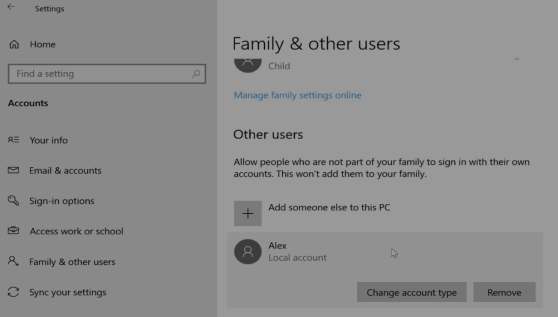You can create a local user account (an offline account) for anyone who will frequently use your PC. The best option in most cases, though, is for everyone who uses your PC to have a Microsoft Account. With a Microsoft account, you can access your apps, files, and Microsoft services across your devices.
If needed, the local user account can have administrator permissions; however, it's better to just create a local user account whenever possible.
Caution: A user with an administrator account can access anything on the system, and any malware they encounter can use the administrator permissions to potentially infect or damage any files on the system. Only grant that level of access when absolutely necessary and to people you trust.
As you create an account, remember that choosing a password and keeping it safe are essential steps. Because we don’t know your password, if you forget it or lose it, we can't recover it for you.
Create a local user account
-
Select Start > Settings > Accounts and then select Family & other users. (In some versions of Windows you'll see Other users.)
-
Select Add someone else to this PC.
-
Select I don't have this person's sign-in information, and on the next page, select Add a user without a Microsoft account.
-
Enter a user name, password, or password hint—or choose security questions—and then select Next.
-
Under Family & other users, select the account owner name (you should see "Local Account" below the name), then select Change account type. Note: If you choose an account that shows an email address or doesn't say "Local account", then you're giving administrator permissions to a Microsoft account, not a local account.
-
Under Account type, select Administrator, and then select OK.
-
Sign in with the new administrator account.

Was this article helpful?
Tell us how we can improve it.